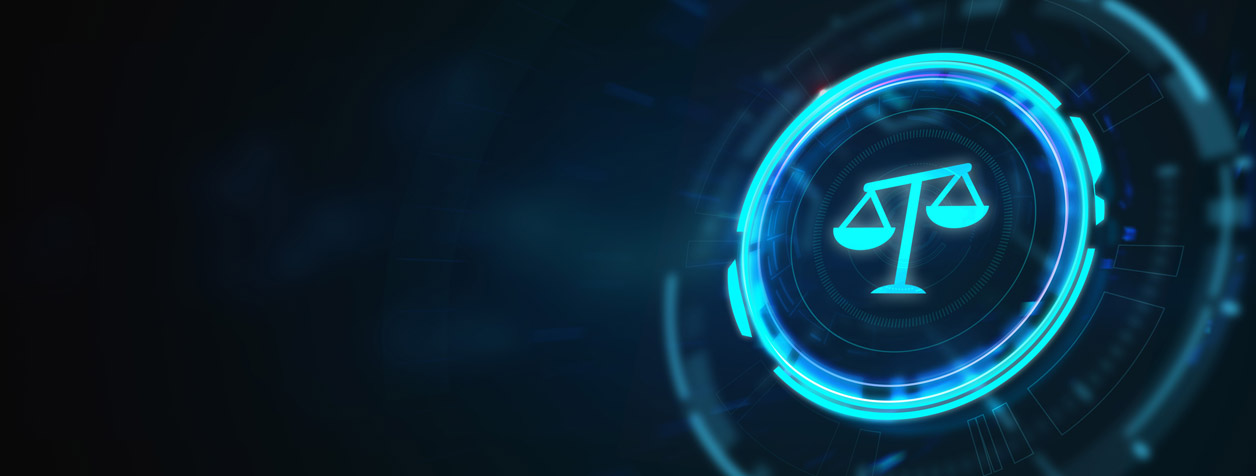Industry Spotlight: Legal Services

In the legal sector, privacy and reputation are paramount. Law firms handle vast repositories of sensitive data, and their credibility is built on trust. A cyber incident can shatter both, leading to irreparable damage. From high-profile leaks to ransomware disruptions, legal services are increasingly in the crosshairs of cyber criminals.
This Industry Spotlight from AXIS Global Cyber & Technology focuses on cyber exposures impacting legal services firms, drawing lessons from real-world incidents and offering practical steps to build resilience.
Cyber Incidents Impacting the Legal Service Industry

Ransomware Attacks
Law firms may face ransomware attacks where systems are encrypted and attackers demand payment to restore access.
Example
- A law firm receives a fake invoice email; a staff member opens the attachment, triggering ransomware that encrypts all customer files
Threat Methods
- Phishing emails with malicious attachments or links
- Exploited vulnerabilities in remote desktop protocols
- Compromised third-party software updates
Data Breaches
Unauthorized access to confidential client information, including case details, financial records, or intellectual property.
Example
- A firm’s document management system is breached due to weak access controls, exposing sensitive litigation data
Threat Methods
- SQL injection or other web application exploits
- Unsecured cloud storage or misconfigured databases
- Credential stuffing using leaked passwords
Business Email Compromise (BEC)
Threat actors impersonate firm personnel to trick staff into transferring funds or sharing sensitive documents.
Example
- An attacker impersonates a senior partner and requests a wire transfer for a 'settlement,' tricking staff into sending funds
Threat Methods
- Spear-phishing targeting partners or finance teams
- Domain spoofing or lookalike domains
- Social engineering via LinkedIn or firm websites
Malware Infections
Malicious software introduced via phishing or compromised websites can disrupt systems or steal data.
Example
- A lawyer downloads a case file from a client’s email, unknowingly installing spyware that monitors keystrokes
Threat Methods
- Drive-by downloads from compromised websites
- USB devices with malicious payloads
- Malicious macros in Word or Excel documents
Insider Threats
Employees or contractors may intentionally or accidentally leak sensitive data.
Example
- A departing associate copies customer files to a personal drive and shares them with a competitor
Threat Methods
- Intentional data theft by employees
- Accidental sharing of confidential files
- Use of unauthorized personal devices
Third-Party Vendor Compromise
Breaches in legal tech providers or outsourced services can expose client data.
Example
- A breach in a cloud-based billing system exposes client financial data across multiple firms
Threat Methods
- Vulnerabilities in legal tech platforms (e.g. eDiscovery or contract review tools)
- Poor security practices by outsourced IT providers
- Supply chain attacks
Credential Theft and Account Hijacking
Stolen login credentials can allow unauthorized access to sensitive systems.
Example
- An attacker gains access to a partner’s email and uses it to manipulate case communications
Threat Methods
- Phishing for login credentials
- Keyloggers or screen capture malware
- Brute-force attacks on weak passwords
Mobile Device Exploits
Compromised mobile devices can expose sensitive communications and files.
Example
- A lawyer’s phone is compromised while traveling, exposing privileged client communications
Threat Methods
- Unsecured public Wi-Fi networks
- Malicious mobile apps
- SIM swapping or device theft
Cyber Exposure Characteristics in Legal Services
- Reputational Risk: While professional reputations are a feature for any organization to protect, it is particularly important for the legal profession that relies on confidentiality and trust. A data breach or system downtime can shatter that trust and lead to clients seeking alternative partners.
- High-value Data: Legal firms work with a vast array of data including sensitive client information, intellectual property requiring careful management of proprietary data, financial records and conveyancing details to name but a few. It makes them highly attractive to threat actors for a variety of gains whether to extort the firm, steal commercially valuable information that could be used for insider trading or hacktivists targeting a certain firm because of a high-profile case.
- People Centric: Legal firms are defined by the people within them. Often individuals work from home or they are sole practitioners. IT is often outsourced in this sector with some 72% of firms surveyed in 2023 by the Law Society not having any cyber insurance.1
- Flat Network Architecture: The consequences of a people-driven culture can also be evidenced in the way systems are designed and used. It is common to see networks with limited segmentation, allowing for threat actors to move laterally more easily if they gain access. This basic control error can greatly increase risk.
- AI and Deepfake Technology: With the rise of AI this has changed the threat landscape. Phishing emails are more sophisticated than ever and you can’t always believe what you see and hear due to the prevalence of deepfake technology which is able to mimic the subtleties of someone’s voice and movements.
- Regulatory Fines and Penalties: When law firms are breached, they are often met with regulatory fines and penalties. There are many exposures from the privacy risk, potential business interruption, extortion payments, fees associated with data recovery and incident response as well as the potential for heavy regulatory fines and penalties.
Steps to Build Resilience and Manage Risk
To strengthen cyber resilience, healthcare organizations should focus on:
- Segment networks to prevent lateral movement of malware
- Implement strong access controls including Multi-Factor Authentication and Privileged Access Management
- Train employees regularly on phishing and data handling protocols
- Patch vulnerabilities promptly and monitor third-party software. Assess third-party cyber security especially as it relates to third parties with access to sensitive data
- Establish secure processes for handling IP and legal discovery
- Invest in cyber insurance and build internal security culture
Conclusions

Legal services firms are entrusted with some of the most sensitive data imaginable. Yet, many remain underprepared for the evolving cyber threat landscape. From reputational damage to operational disruption, the stakes are high. Building resilience requires a proactive approach combining technology, training, and governance. Cyber insurance and robust risk management strategies are essential to protect both customers and the firm’s future.
Disclaimer
This material is provided for informational purposes only and is not an offer to sell, or a solicitation to buy, any particular insurance product or service for a particular insured. It is intended for licensed insurance professionals. Cyber incident examples may be based on actual cases, composites of actual cases or hypothetical claim scenarios and are provided for illustrative purposes only. Facts may have been changed to protect the confidentiality of the parties. Whether or to what extent a particular loss is covered depends on the facts and circumstances of the loss, the terms and conditions of the policy as issued, and applicable law.
The practices, services or service provider(s) discussed herein are suggested as risk mitigation or incident response resources only. Use of any practice, service or service provider does not guarantee the performance or quality of the services provided, including the avoidance of loss, the fulfilment of any obligations under any contract, or compliance with any law, rule, or regulation. AXIS is not responsible for the effectiveness of a cyber risk management program and encourages each policyholder, together with advice from their professional insurance advisor, to perform its own independent evaluation of any practice, service or service provider as part of its overall risk management strategy.
For information about our products and underwriting companies, please see https://www.axiscapital.com/product-information

